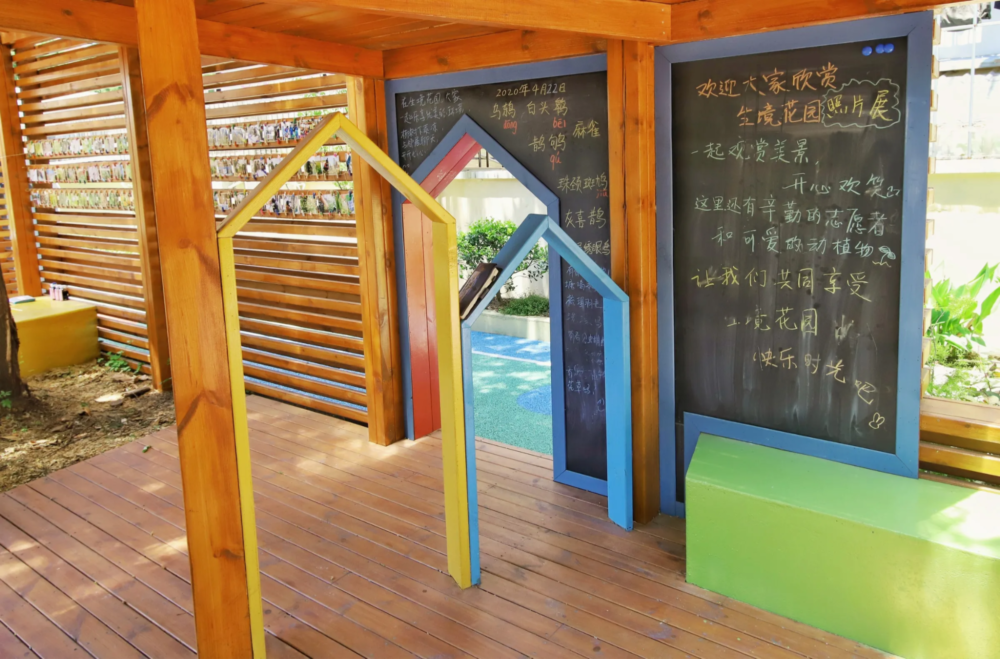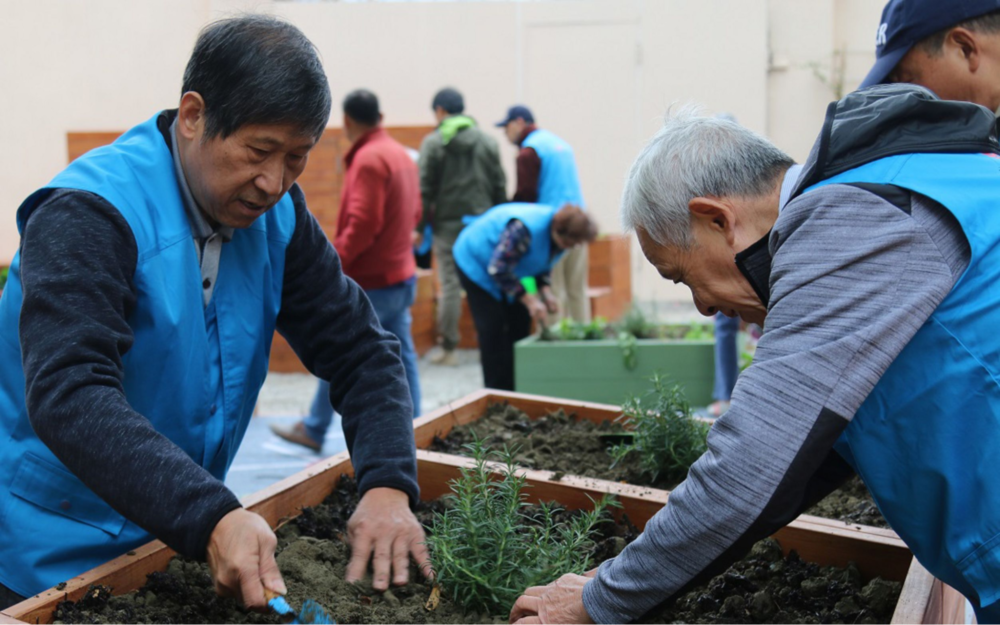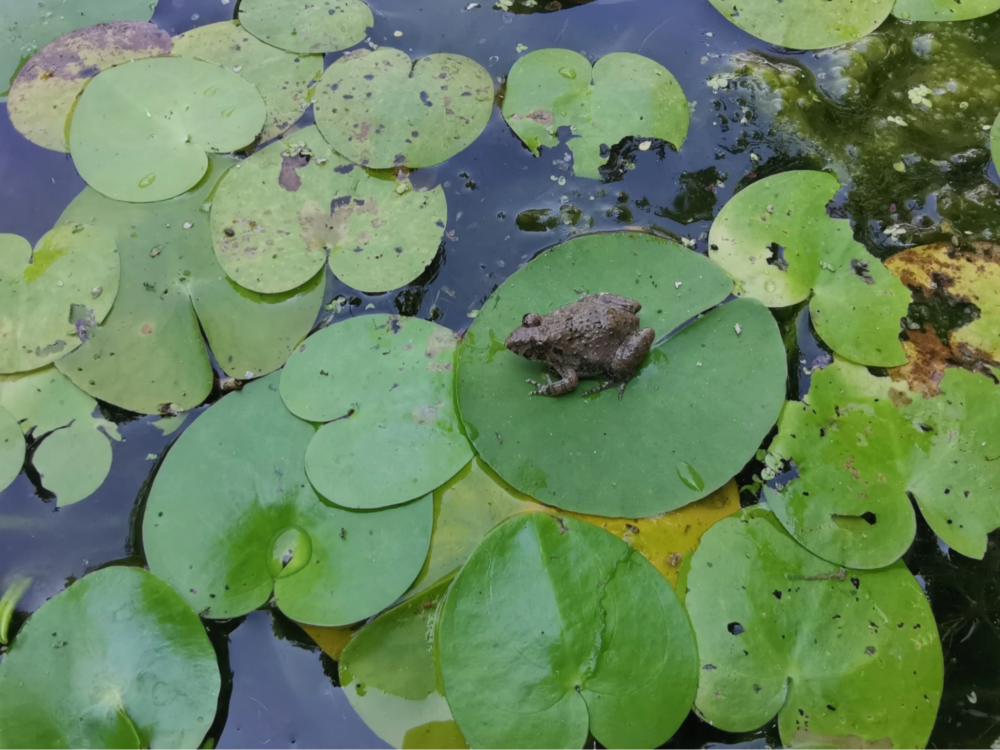Shanghai Hongxu Habitat Garden
- 622
- 17 min to read

About the city. The gardens are an aspect of Shanghai’s 2035 master plan, which aims to make Shanghai one of the best cities in the world on measures like carbon emissions, tree cover, and water quality. By filtering pollutants from the air and water, these communal greenspaces make Shanghai more resilient to the impacts of climate change. They are home to more than 400 species of native plants and provide habitat for more than 40 species of urban wildlife.
Goal
The aim of the project is to build urban biodiversity in community space through integrating multi-party resources, cooperation and sharing.
Implementation period. The project was launched in 2019.
Fact
- Today’s urbanization is getting faster and faster, we are surrounded by dense skyscrapers, cars, people and well-connected road traffic, at the same time, the original wildlife habitats in the city are facing a lot of problems, such as loss, fragmentation, simple structure, invasion of foreign species, etc., and the number of wildlife in the city is gradually decreasing, and many species have even disappeared from the city. Based on the assumption that more people living in the city can find the resonance with nature, the project tries to design and create the Hongxu Habitat Garden in the city, combining the needs of people and the living space of animals.
- In the “Shanghai Government Work Report for 2021”, the municipal government included environmental protection, carbon emissions, Suzhou River management, garbage reduction, pocket parks, etc. in a clear work plan, and listed detailed indicators such as new forest land, green land, urban greenways and three-dimensional landscaping. Through this, the promotion of habitat gardens has received close attention and strong support from Changning District Low Carbon Emission Office and Autonomous Administration.
- Changning District has carried out aquatic ecological restoration and bank softening in Zhoujiabang, Lianjing Harbor, West Outer Ring River and other district-level rivers, aiming at restoring the natural form of rivers and lakes, and creating a unique urban aquatic ecosystem of “Grass, Fish, Birds and People”. “During the 14th Five-Year Plan period, Changning will carry out aquatic ecology and bank softening in the Airport River adjustment project, creating a model for river biodiversity protection.
- Changning District has completed the construction of the outer ring 100-meter forest belt ecological greenway renovation project in 2019, after the renovation of the ecological function of the forest belt has been greatly improved, but there is still much room for improvement in biodiversity protection. In the future, Changning will combine the greenway later maintenance to create more environment for biodiversity protection. In addition, Changning will also support the construction of campus-level “Habitat Gardens” in schools that are in a position to do so.
Solutions

The area before transformation
The project is located in Hongxu District, Xianxia Xincun Street, Changning District, Shanghai, which was a typical old-fashioned public housing district in the 1990s. The site is located on the south side of the district on a corner lot, with a hidden space, which is a piece of negative space obtained by demolishing violations in the district. In the early stages of the design process, it was discovered that wildlife such as bulbuls, blackbirds, and red-bellied squirrels resided here. After studying the surrounding resources and environment, it was found that this place is close to Shanghai Zoo and Outer Ring Road, with a good ecological base, and it can be a good corridor or transit station connecting these two ecological patches. On this basis, it can create a place for natural quiet and light activities, so it’s been considered to make it a community garden with habitat function.

The idea is to go from an artificial to a natural form, with residents in mind. The southern small triangle area is returned to nature as the habitat of the target species.
The plant design includes native tree species like the willow and the paper mulberry. These are connected to the canopy of the Metasequoia, the Japanese cherry, and the osmanthus. This creates a space for birds and squirrels. Local species should be used to provide food and shelter for local organisms. These include Sapium sebiferum, Rubus hirsutus, Ilex cornuta, Lycium chinensis, etc.

The entrance to the Nature and Science resting area is brightly colored to attract visitors. Some wooden platforms near the existing willow trees and the north wall are used for leisure activities. The gallery is designed with two scales: one for adults and one for children. The colorful door and outdoor blackboard make the space more fun and help the team’s idea of being “child-friendly.”

The interactive experience area is located in the area with good illumination on the north side of the site, meeting the needs of urban residents to experience farming and gardening, allowing children to participate in labor and harvest, experience the changes of four seasons, and understand the source of food.
The deformed “one-meter garden” planting boxes are randomly placed, mainly for vegetables and herbs. The traffic space is made of gravel, and the circular steps are themed with birds, insects, flowers, plants, and graffiti.

Some planting areas, like a workbench and toolbox, are set up with the corridor to help residents manage the garden. Also, there are boxes for the disabled to help them heal through gardening.
The rainwater collection bucket is set to receive rainwater, which can be used for irrigation in the autonomous planting area. It shows how to use water wisely. A composting area is set up near the west wall to show how compost is made. It is used to digest kitchen waste, treat garden waste in the ground, and promote science.

The pond is the center of the nature preserve and provides refuge for a variety of animal species. Reinforcing the pond with stone and gravel creates a porous interface that serves as a passage and shelter for animals. Plants along the shore of the pond help clean the water and provide a food source and refuge for aquatic animals. Trees and shrubs planted near the pond create a barrier channel that allows birds to drink and swim without being observed by natural enemies. Forage plants provide food for birds, and plants with broad leaves are suitable for nesting. In addition, a selection of overwintering plants provides food for birds during the winter, and fragrant flowers attract honeybirds and insects.

A small habitat for insects is created in the eastern area. Here, vanilla plants are planted and meadows are planted with flowers that serve as food sources or host plants for insects. Different habitats are created for different insect species: sand with gravel, flower pools and special boxes with holes and different environments. This provides shelter and protection for specific insect species as well as popularizing science. The area also offers places for bird watching without harming birds. A professional infrared camera allows the positive effects of the garden on birds and other creatures to be recorded. Insects attracted by the plants also serve as natural observation sites for children in the community. Overall, the area combines conservation and science popularizing functions.

In order to fully utilize all the functions of the site and create the life of “Community Garden +”, the project mainly realizes the concept of community empowerment and residents’ participation in the life of the site. At the same time, it is a garden with a “habitat function” that can provide food, water and shelters for wildlife.
After renovating the community garden so that residents can better understand, use and maintain the garden, the Hongshu District Committee and the Nature Conservation Association (TNC) started to plan and organize a series of resident participation activities together with the project to actively empower community volunteers, including volunteer training, lectures for citizen scientists, planting meter garden, ecological composting, explaining nature observation skills and other activities so that residents can understand the rich functions of the community garden with various
Team
Shanghai State Council
Design company: Shanghai Clover Nature School & Pandscape Design
Lead designer: Dr. Wei Min
Design team: Xie Wenwan, Li Jie, Ding Shiyi, Liao Xiaoping
Developer: Hongxu Neighborhood Committee, Xianxia Xincun Street, Changning District, Shanghai
Strategic partner: The Nature Conservancy TNC
Wall art design and drawing: Public Art Studio of Shanghai Academy of Fine Arts, Shanghai University
Construction: Shufeng Landscape
Timeline
- The project was completed in December 2019.
- This is the second habitat garden project that Clover House has collaborated with The Nature Conservancy (TNC).
- In 2020, Shanghai’s Changning District was recognized by the State Council for its outstanding performance in “preserving and intensively utilizing land, as well as having less idle land”. Among them is the Hongshu Habitat Garden as one of the outstanding examples of urban renewal in Changning District, which has been written about by many media outlets. As a demonstration project, the original design concept, project implementation experience and volunteer management mechanism of Hongxu Community Habitat Garden will become an important accumulation of community habitat garden autonomy concepts, as well as an important benchmark for the pilot construction of 7 habitat gardens that Changning District focused on promoting in 2021.
- On December 10, 2021 Shanghai Hongxu Habitat Garden celebrated its third birthday. More than 30 residents gathered together to celebrate.
- In 2021, with promotion and assistance from TNC (The Nature Conservancy), seven new gardens were constructed in the Changning District.
- The gardens have already hosted community events and exhibits, with support from local partners. For example, in June 2021, volunteers celebrated World Environment Day by repairing and creating new “bug hotels” at the Hongxu Habitat Garden to attract beneficial pollinators. The gardens also inspired the Lego Habitat Garden Exhibition, which ran from November 2021 to January 2022, featuring plants, insects, and animals built out of Lego to bring attention to the importance of nature in the city.
- The city has a goal to create 30 more habitat gardens by 2025.
If you notice an error or inaccuracy in our editorials, please email [email protected] so we can look into it.






